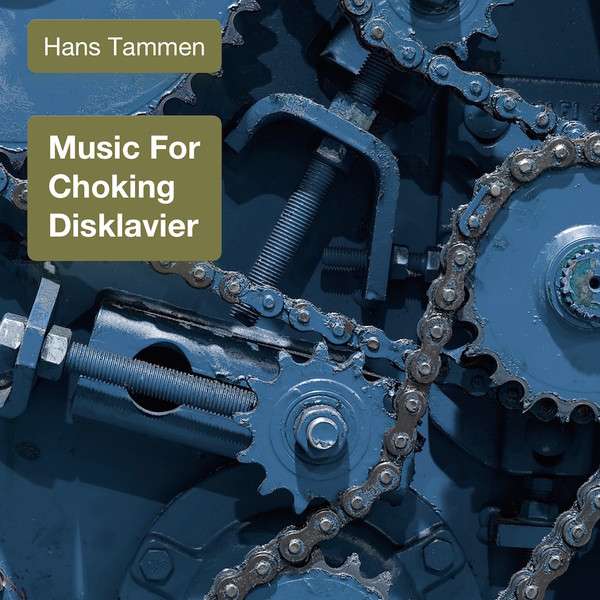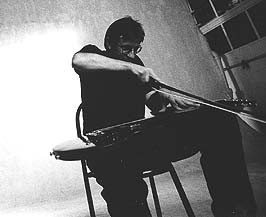
Hans Tammen
Music For Choking Disklavier
Album DK 2015 on clang label
Electronic (Experimental)
“Imagine the Disklavier in the center of the stage, the composer/performer somewhat distant to the side. Several microphones are put into position not over the strings, but at the hammers and keys. Remotely controlled by the composer/performer, the piano produces constantly rumbled and crackled noises, often rhythmically, occasionally ringing strings are added on top, or stopping for a few seconds on a chord. The piece explores the sonic capabilities of the Disklavier machine. Automatons like the Disklavier are often used to present the "superhuman" capabilities of these machines. However, I myself am more interested in the hidden sonic qualities of those automatons, and there is a lot to discover for the listener. Technically the Disklavier is fed too much information, and at the lowest possible volume. At this point the hammers do not have enough power to bang the strings anymore, and ideally they only vibrate to produce a low rumbling sound. Occasionally the MIDI brain stops for a few seconds - "chokes" - on a chord due to the data overload, hence the title "Choking Disklavier". To create the pieces, the playful intervention by the composer/performer to arrange the various possibilities into a musical structure is needed. The software allows me to change several parameters of the data that is fed into the machine (basically the amount of data per second), the keys it is sent to (according to weighted random strategies), and the MIDI-velocity (well, mostly 1, 2 and 3). Certain combinations produce just rumbling sounds, others tend to be very rhythmic because the MIDI brain seems to deliver the data in blocks instead of continuously, others allow certain keys to be hit - although it is hardly controllable which keys. The last piece focuses solely on the choking moments. I cut all the rumbling out from a long version I recorded, leaving only the moments the machine "choked" on the chords. The project was premiered as an automated version during Brooklyn College's Open House in April 2006. The installation ran for 6 hours, each 10-minute cycle went through 9 different musical stages. Thanks to Yonatan Niv for inviting me to present at Brooklyn College and making the subsequent recording possible, and Paul Geluso for the mastering.” -- Hans Tammen
Musicians
 | Hans Tammen g, p, DE album by |
Producers
| Yonatan Niv engineer |
| Paul Geluso mastered by |
Composers
| Hans Tammen |
Album Tracks 

| No | Title | Artist | Composer | Duration | |
|---|---|---|---|---|---|
| 1 | Point De Vue Du Gras | Hans Tammen | 3:51 | ||
| 2 | Ascending And Descending Chairs | Hans Tammen | 6:07 | ||
| 3 | Studies In Animal Locomotion | Hans Tammen | 5:22 | ||
| 4 | Le Voyage Dans La Lune | Hans Tammen | 2:07 | ||
| 5 | Looking Down Sacramento Street | Hans Tammen | 2:22 | ||
| 6 | La Sortie De L'Usine Lumière A Lyon | Hans Tammen | 2:45 | ||
| 7 | Boys Playing Leapfrog | Hans Tammen | 2:45 | ||
| 8 | American Bison Cantering | Hans Tammen | 3:17 | ||
| 9 | Boulevard Du Temple | Hans Tammen | 1:48 | ||
| 10 | Gymnast Jumping Over A Chair | Hans Tammen | 4:47 | ||
| 11 | La Barricade De La Rue Saint-Maur-Popincourt | Hans Tammen | 2:04 | ||
| 12 | Piano Nocturne | Hans Tammen | 6:45 |
30sec audio samples provided by ![]()
